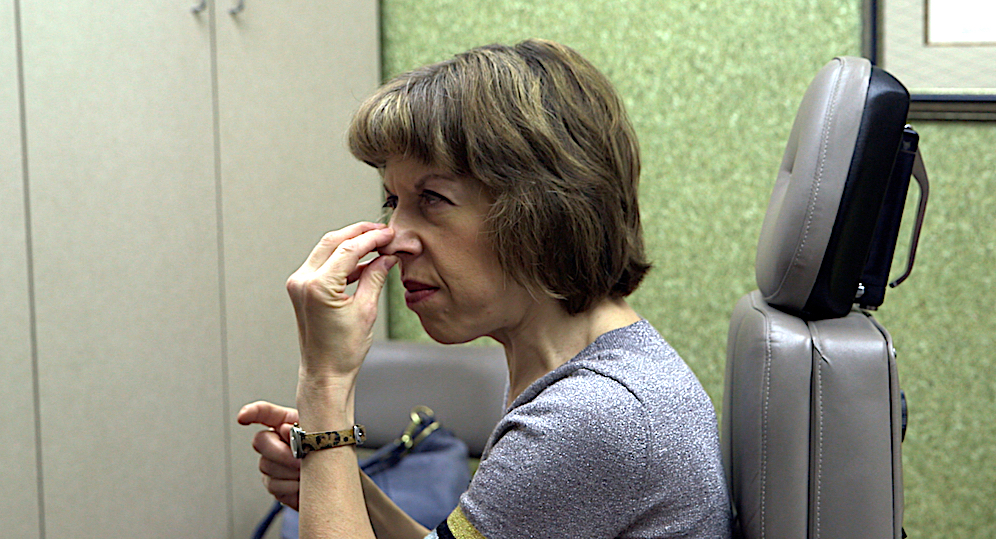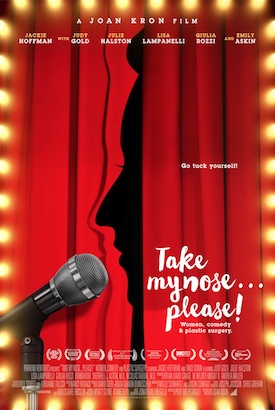 Joan Kron’s Take My Nose…Please! is a seriously funny and wickedly subversive look at the role comedy has played in exposing the pressures on women to be attractive. The documentary astutely examines society’s desire/shame relationship with plastic surgery. More than 15 million cosmetic procedures are performed each year in the United States, 90% on women. Yet, for those who elect to tinker with Mother Nature, especially for high-profile women, plastic surgery is still a very dark secret. Funny women, though, are the exception. From Phyllis Diller and Joan Rivers to Roseanne Barr and Kathy Griffin, comedians have been unashamed to talk about their perceived flaws, and the steps taken to remedy them. For these dames, cosmetic surgery isn’t vanity, it’s affirmative action — compensation for the unfair distribution of youthfulness and beauty! By admitting what their sisters in drama deny, comic performers speak to women who feel the same pressures. The documentary follows two comedians as they deliberate about going under the knife. Emily Askin, an up-and coming improv performer, has always wanted her nose refined. Jackie Hoffman, a seasoned headliner on Broadway and TV, considers herself ugly and regrets not having the nose job offered in her teens. And maybe she’d like a face-lift, as well. As we follow their surprisingly emotional stories, we meet other who have taken the leap — or held out. I sat down with the very impressive first-time director Joan Kron who, incidentally, will be turning 90 later this year.
Joan Kron’s Take My Nose…Please! is a seriously funny and wickedly subversive look at the role comedy has played in exposing the pressures on women to be attractive. The documentary astutely examines society’s desire/shame relationship with plastic surgery. More than 15 million cosmetic procedures are performed each year in the United States, 90% on women. Yet, for those who elect to tinker with Mother Nature, especially for high-profile women, plastic surgery is still a very dark secret. Funny women, though, are the exception. From Phyllis Diller and Joan Rivers to Roseanne Barr and Kathy Griffin, comedians have been unashamed to talk about their perceived flaws, and the steps taken to remedy them. For these dames, cosmetic surgery isn’t vanity, it’s affirmative action — compensation for the unfair distribution of youthfulness and beauty! By admitting what their sisters in drama deny, comic performers speak to women who feel the same pressures. The documentary follows two comedians as they deliberate about going under the knife. Emily Askin, an up-and coming improv performer, has always wanted her nose refined. Jackie Hoffman, a seasoned headliner on Broadway and TV, considers herself ugly and regrets not having the nose job offered in her teens. And maybe she’d like a face-lift, as well. As we follow their surprisingly emotional stories, we meet other who have taken the leap — or held out. I sat down with the very impressive first-time director Joan Kron who, incidentally, will be turning 90 later this year.
Danny Miller: I can’t remember the last time I laughed that much during a documentary — starting with that hilarious bit by Margaret Cho. I’ve always been a huge fan of Jackie Hoffman and I enjoyed hearing Emily Askin’s story. Even though women in comedy tend to be more open about such things, it was still very brave of them to put their process out there for everyone to see. Did getting them to agree to be profiled in the film take some convincing?
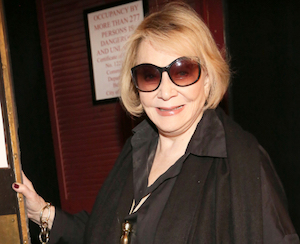 Joan Kron: You know, once they understood what it was about, they were very happy to talk to me on camera. They were both so honest and natural in front of the camera. Jackie never once edited herself or said, “Please don’t use that!” Emily didn’t either. In fact, I had no idea going in about some of the things she was going to reveal in the film.
Joan Kron: You know, once they understood what it was about, they were very happy to talk to me on camera. They were both so honest and natural in front of the camera. Jackie never once edited herself or said, “Please don’t use that!” Emily didn’t either. In fact, I had no idea going in about some of the things she was going to reveal in the film.
It was remarkable how open she was about her past.
I can tell you how that happened. I was in Pittsburgh filming Emily performing with her improv group and we were at her mother’s house getting ready for an interview. At the time, I was thinking that the film needed more emotion, and I asked Emily, “What can I ask your mother that will trigger some emotion? And she said, “Well, you can ask her about the time I tried to kill myself.” And I said. Whoa! What?! She explained that when she was young she was molested by a family member. I did end up talking to her mother on camera about that and I think it added a lot of nuance to Emily’s story.
Totally. Including her feeling of empowerment in deciding to go down that road. “This is MY body, MY face, this is what I want to do” — not doing it in any way to please other people.
That’s it. Emily hit every point I wanted the film to convey. I got so lucky in finding her.
But you didn’t know with Emily or Jackie that their exploration would actually end with surgery?
No, I had no idea! I just knew they were thinking about it and they agreed to be filmed as they went through the process. Of course, I had absolutely no say in their decision, I would have been totally fine if they had decided not to go through with it.
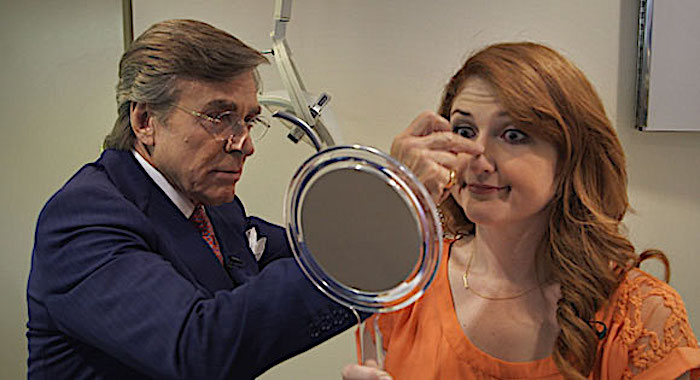
The film presents such a refreshing view of this topic since most coverage we get in the media is all about the freak show element — horrifying examples of plastic surgery gone bad or people who clearly have issues going on and do way too much to alter their appearance.
Exactly. I really hate that freak show element. I’m always troubled by films and TV shows about plastic surgery because everything they give us is so exaggerated. I get it — they’re trying to make drama, they’re trying to make entertainment, they’re not going to pick somebody who says, “I would just like my nose to be slightly smaller,” they want to bring in people who are in the extreme. I’ve written about plastic surgery for many years so I’ve appeared in some of these films as a talking head, but then when I see the finished product, I always think “No, that is not the full picture.” That’s why I wanted to make this film, to show a more typical process that people go through without the freak show component.
Does it bother you when people call this film a “defense” of plastic surgery?
I did not want to make a film “for” or “against” it. If someone sees it that way, that’s their right, but that’s not what I set out to do. My goal was simply to make a realistic portrait of plastic surgery seen through the eyes of comedians. I chose to focus on comedians because they are the only people in the public eye who have been honest about their own procedures. I always say that most of Hollywood has taken the “Hypocritical Oath” — to deny it in public but do it in private! But comedians, to their credit, talk about their vulnerabilities, their problems, their issues with their apeparance, and many have been quite open about plastic surgery. They have really educated the public — I think of it as a public service, telling women what is available and possible without focusing on all the extreme scenarios.
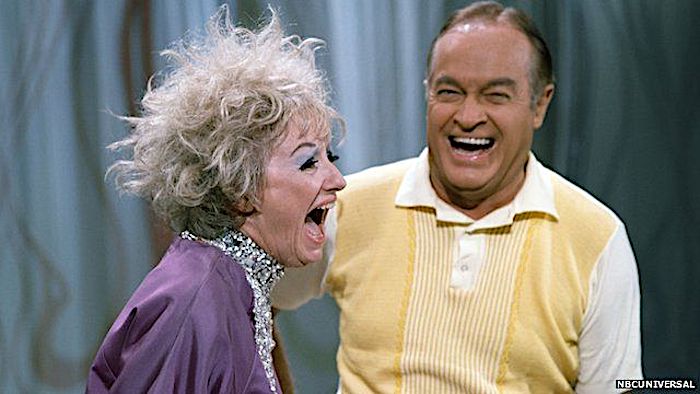
It’s so fun to see all the footage in your film of the great comedians of my childhood: Totie Fields, Phyllis Diller, and of course, Joan Rivers. Do you think if Joan had lived, you’d have had her in the film?
Oh, she was definitely going to be in it — I knew Joan and we discussed it. I had done stories about her plastic surgeries from beginning to end, she gave her doctors permission to talk to me. Of course, a lot of people think Joan died while having plastic surgery but that’s not true. She was having an endoscopic procedure because she had some polyps on her vocal cords and was worried about her voice. It had absolutely nothing to do with plastic surgery but a lot of people wanted to believe that because it fit in with their morality play that bad things happen to people who get plastic surgery.
And, of course, we are such a judgmental society that we’re either saying “Ew, she’s let herself go!” or “Ew, she’s had work done.”
Exactly.
Jackie Hoffman is just hilarious in the documentary while being so vulnerable and honest. How did she react to the finished film?
She didn’t want to see it at first because she doesn’t like watching herself. Finally, I said, “Jackie, you have to see it!” and dragged her to my house for a screening. She was nervous but she loved it. She even laughed at all her own jokes! She’s come to a few screenings, too. At one Q&A after a screening in New York, someone asked her, “So, Jackie, if you had it to do over, do you regret having the surgery?” She said, “Regret it? I love it! I even went back to have my eyes and chin done!”
It’s interesting to watch both Jackie and Emily navigate their decisions in the context of their relationships. Of course, both of their partners were extremely supportive and not in any way pressuring them to go through with it. That would have put their stories in a different light.
Yes, people are surprised by that because they’re so used to thinking that women do it for the men in their lives which I think is another old wives’ tale. I mean, yes, of course there are some men who do encourage the women they’re with to get plastic surgery, but to be honest, that’s mostly about breasts — a body part I wasn’t covering at all in my film! (Laughs.)
Joan, I know you don’t make a big deal about your age, but I have to say how inspiring it is that you would make your first film at the age of 89.
Thank you. I’ve never been shy about taking on big projects — not in the movie world until now, but in other areas. In the 60s I put together huge art exhibitions. And my husband and I had a buffalo ranch for many years. So I thought, “Well, if I can understand how to raise a buffalo, I can do anything.” Buffalos are wild animals — you don’t go up to a buffalo and pat it, they don’t go into a barn at night. At the height of our ranch, we had a hundred head of buffalo and two breeding bulls that were about 3,000 pounds each. If they see a pasture they want to go to, there’s no holding them back, they’ll just knock down any iron barriers they see.
I’ve never heard a better metaphor for the film industry! I’m personally inspired by the diversity of your career.
I graduated from Yale Drama School in 1948. I wanted to be a costume designer and I worked in the theater and did a lot of early television. The main thing I had to learn was resourcefulness — how to make something out of nothing since we often had hardly any budget. I remember working on a production of Androcles and the Lion off-Broadway and figuring out how to use a $2.00 mop for the lion! So being resourceful is just a way of life for me.

